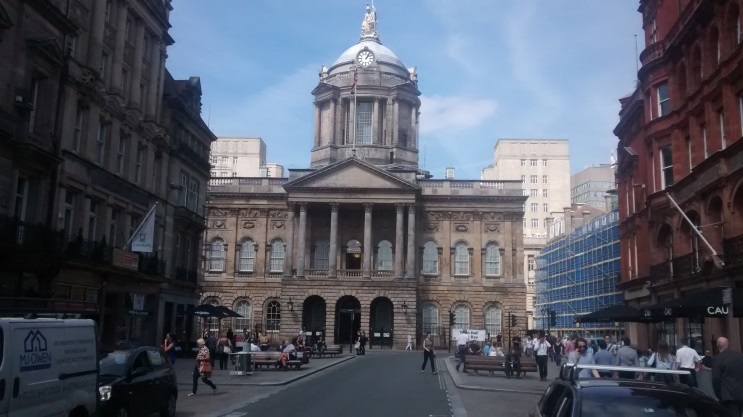The Client
Situated in the heart of the City Centre, Liverpool Town Hall is a Grade I listed building, home to the Lord Mayor of Liverpool. It was built in the 18th century and its rooms are used regularly for weddings, conferences, meetings and functions. It has also played host to various prestigious events over the years, including visits by royalty and famous celebrities including The Beatles.
The Challenge
The rooms are regularly hired out for meetings and events, so making sure the building is warm at all times is a main priority. The original heating system consisted of ordinary fan convectors which were covered with decorative panels. The decorative panels restricted the amount of heat that was distributed into each room which stopped the warm air circulating effectively. The heating system was also unable to reach the temperature required to heat the building successfully, leaving many rooms chilly, particularly during the winter months. In addition, due to its age, the Town Hall has a very high ceiling, which creates further challenges. The Council needed to find a solution that would address each of these issues properly.
As a listed building, the interiors had to be protected and the heaters had to be hidden so they didn’t affect the fabrication of the building. The council needed a product that was able to be adapted for this project so Ray Black, the Mechanical Maintenance Manager at Liverpool City Council, and the Smith’s team discussed producing a fan convector to meet these requirements. Smith’s Caspian Universal Concealed was developed especially for this project and has also been used for various other projects including in churches and hotels.
The Solution
The old heaters were situated in three reception rooms; one ballroom; two dining rooms; and a meeting room. Each was replaced with Smith’s Caspian Concealed fan convectors. Around four units were installed in each room and they were able to position the ducts so the heat could be effectively distributed around the building. This project was managed by Ray Black who chose Smith’s products because he had used them before and was impressed with the company’s ability and willingness to create a product to fit the specification of the project. The Smith’s Caspian Concealed fan convectors were chosen because of their heat outputs, efficiency and their ability to be adapted to fit the requirements of the building. Around 20 Caspian Concealed units were hidden behind panels in the walls of various rooms within the building, enabling visitors to feel the effects of the heat without having to see the products. The concealment of the fan convectors has been done without any compromise to the internal fabric of the building or to the fan convection heating. The Caspian Concealed is perfect for heritage restorations and projects where the physical appearance of the building is essential to the overall appeal of the building.
The Product
Fan convectors operate via a heat exchanger and small electric fan. The heat exchanger is connected to a standard two-pipe central heating system which passes hot water through the heat exchanger, transferring its heat to the aluminium fins. The fan draws in cooler air which is heated as it moves over the heat exchanger and is then expelled gently back into the room by the same fan. Unlike a conventional panel radiator, the fan convector provides more even temperature spread and much faster warmth. The small fan means that the heat produced is distributed using forced, rather than natural, convection and consequently this makes it far more responsive to thermostatic controls. As with all Smith’s products, the Caspians come with a free five-year warranty for parts and labour.

